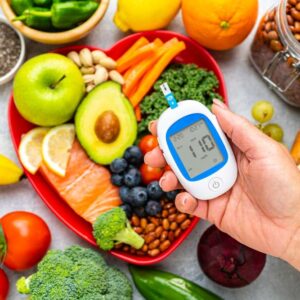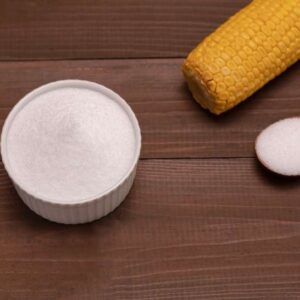
Warning: This Popular Sweet May Be Poisoning You
- One of America’s most loved desserts has a toxic secret
- Sugar is not your only concern when it comes to this indulgence. Find out what is lurking in your dessert
- One list that can make or break your confectionary decisions.
Dear Reader,
Every time you bite into your dessert, do you think, “Wow, these toxins taste wonderful?”
Well, maybe you should.
Recently, new evidence has surfaced that one of America’s most favored confections is chock-full of contaminants.
And surprisingly, I’m not talking about sugar.
Data from the National Confectioners Association shows that most Americans are enjoying this treat twice a week.1
And this sweet is so popular that the average American consumes 9.5 pounds of it annually.2
Not to mention this dark and delicious food has weaved its way into all types of foods, from cakes, cookies, and candies to savories like bacon and mac ’n’ cheese.
If you haven’t guess it yet, I am talking about chocolate — and it’s nearly impossible to escape it in the modern dietscape.
![]() Death by Chocolate
Death by Chocolate
Well, maybe death is a little extreme…
But these new results do show that chocolate consumers are at risk for some pretty serious health issues — especially children.
Last month, a California-based consumer health watchdog group called As You Sow found many of the big-name chocolate companies are selling products riddled with toxic heavy metals.
These metals include cadmium and lead.
Lead exposure is associated with multiple health issues, including memory loss and declining mental functions in adults, but has even more devastating results in children.3
These include behavioral issues like increased antisocial behavior, reduced attention span, and even lower IQ in children. All of these negative health effects are thought to be irreversible in children.4
No level of lead is safe for children and pregnant women.
Cadmium exposures can lead to kidney damage and bone issues. Long-term intake of cadmium may lead to softening of the bones, osteoporosis, and cancer.5
When As You Sow conducted tests of 26 products in their single serving size three times, they found they all contained more lead and cadmium than allowed by California law.6
Among these were Godiva, Hershey, Mars, Trader Joe’s and Whole Foods brands.
Hershey’s director of corporate communications, Jeff Beckman, defended their products. In a statement to The Washington Post:
The [Food and Drug Association] and many states monitor the amount of cadmium and lead in food. All Hershey products meet all FDA and state standards, and our cocoa powder and chocolate are safe to eat. This includes the very strict Proposition 65 standards for lead and cadmium in candy and other products.1
He went on to say, “People have been eating cocoa and chocolate for centuries with no evidence of a single incident of concern regarding these naturally occurring minerals.”1
But researchers at the University of California Santa Cruz disagree. A study they published in Environmental Health Perspectives found that these high levels of lead found in chocolate are not from a natural source.
One of the researchers from the study, Russ Flegal, stated this about the possible sources:
The average lead concentration of cocoa beans was ≤ 0.5 ng/g, which is one of the lowest reported values for a natural food. In contrast, lead concentrations of manufactured cocoa and chocolate products were as high as 230 and 70 ng/g, respectively, which are consistent with market-basket surveys that have repeatedly listed lead concentrations in chocolate products among the highest reported for all foods. One source of contamination of the finished products is tentatively attributed to atmospheric emissions of leaded gasoline, which is still being used in Nigeria.
While the origin of these toxins is unclear, Elaine Van Vliet, director of toxic chemical research at As You Sow, thinks the contaminates may be coming in contact with the chocolate somewhere in the manufacturing process.
The folks at As You Sow filed legal notices demanding candy companies add warning labels to their current packaging for high levels of cadmium and lead.
If you would like to see the As You Sow’s list of contaminated brands, click here. If you continue to scroll down, there is also a list of “No Warning Required” chocolates. While these may not be some of your favorites, at least if gives you a few options.
In the meantime, you may want to consider subbing Jordan almonds for chocolate bunnies this spring.
Live Well,

Natalie Moore
Managing editor, Living Well Daily
Sources
[1] How much lead is in your chocolate?
[2] Americans eat HOW MUCH chocolate?
[3] Lead poisoning
[5] EXPOSURE TO CADMIUM: A MAJOR PUBLIC HEALTH CONCERN
Written By Natalie Moore
Natalie Moore is a dedicated health researcher with a passion for finding healthy, natural, and science-based solutions. After a decade of direct healthcare experience in western and natural medicine, she was involved in public health research before joining Living Well Daily.
View More Free Articles
Stop Obsessing Over Diet Trends
Can we stop with the endless diet debates already? Every other week there’s a new headline shouting about which diet is best for weight loss, heart health, or diabetes. Paleo, keto, low-carb, high-protein… it’s exhausting. And now, a new meta-analysis is out comparing the Mediterranean diet, the DASH diet, and something called AHEI (that’s “Alternative...
A New Reason to Ditch Processed Junk
If you’ve ever walked the inside aisles of your local grocery store and thought, “This is all just junk,” your instincts were spot on. A new study published in the journal Thorax just added another red flag to the list of dangers linked to ultra-processed food—a 41 percent higher risk of lung cancer. That’s right....
When Being Winded on Stairs Is Serious (And When It Isn’t)
I had an athlete visit me recently because he experienced shortness of breath while climbing stairs. He is in great shape, so he was worried about what it might mean. “Doc,” he said, “I run five miles three times a week. Why am I huffing and puffing after two flights of stairs?” His concern is...
Study EXPOSES Hidden Danger Lurking in Your Car
We think of our homes and cars as safe havens. But according to a startling new study, they may be flooding your lungs with microscopic plastic particles—every single day. Researchers in France recently found that adults inhale an average of 68,000 microplastic particles daily from indoor air alone. To put that in perspective, that’s about...
Mailbag: Is Modern Food Making You Snore?
“What can cause snoring, and is there a way to correct this issue?” —Seeking Silence Hi Seeking, Snoring happens when the soft tissues in your throat relax and vibrate as air passes through during sleep. While several factors can cause snoring—from sleep position to nasal congestion—I want to share one trigger that might surprise you....
Simple Food Swap SLASHES Dementia Risk 28%
Let’s be honest… who would jump at the chance to cut their dementia risk by 28 percent. And no, you don’t need to run marathons, survive on broccoli, or learn to play the zither (whatever that is) to make it happen. All it takes is one easy swap—something that’s probably already in your refrigerator. Researchers...
This SMART Floss Exposes Hidden Health Danger
Scientists have created dental floss that doesn’t just clean between your teeth—it also tracks your stress while you’re flossing. Now, I know what you’re thinking… “Great—now even flossing is going to stress me out by telling me how stressed I am.” But this fascinating new tool from Tufts University could be a game-changer for understanding...
Is This "Safe" Sweetener Damaging Your Brain?
The headlines are alarming… “Popular Sugar Substitute Linked to Brain Cell Damage” and “Erythritol Could Damage Critical Brain Barrier” are just two of the dozens I’ve spotted recently. But before you toss every sugar-free product in your pantry, let’s take a closer look at what this study actually shows—and what it doesn’t. The latest research...
This Summer Threat Could SPIKE Your Blood Sugar
Picture this… It’s another scorching hot summer day. You crank up the air conditioning while watching the weather forecast, which predicts yet another “record-breaking” heat wave. It’s starting to feel like just another miserably uncomfortable summer. But what you might not realize is that—if you have diabetes—those rising temps could do far more damage to...
Move Over Yogurt—5 Foods That Pack MORE Probiotics
Let’s talk about your gut. The microbiome is the collection of trillions of bacteria and other tiny organisms that live in and on your body—especially in your gut—and help keep you healthy. I’ve written often about how vital it is to maintain a healthy microbiome. And you might have dutifully added yogurt to your shopping...









